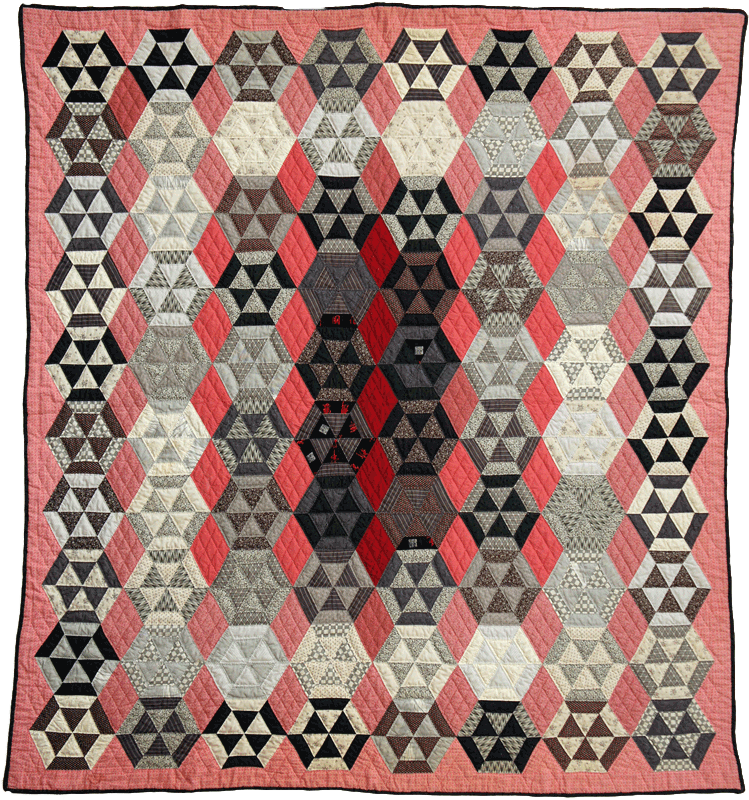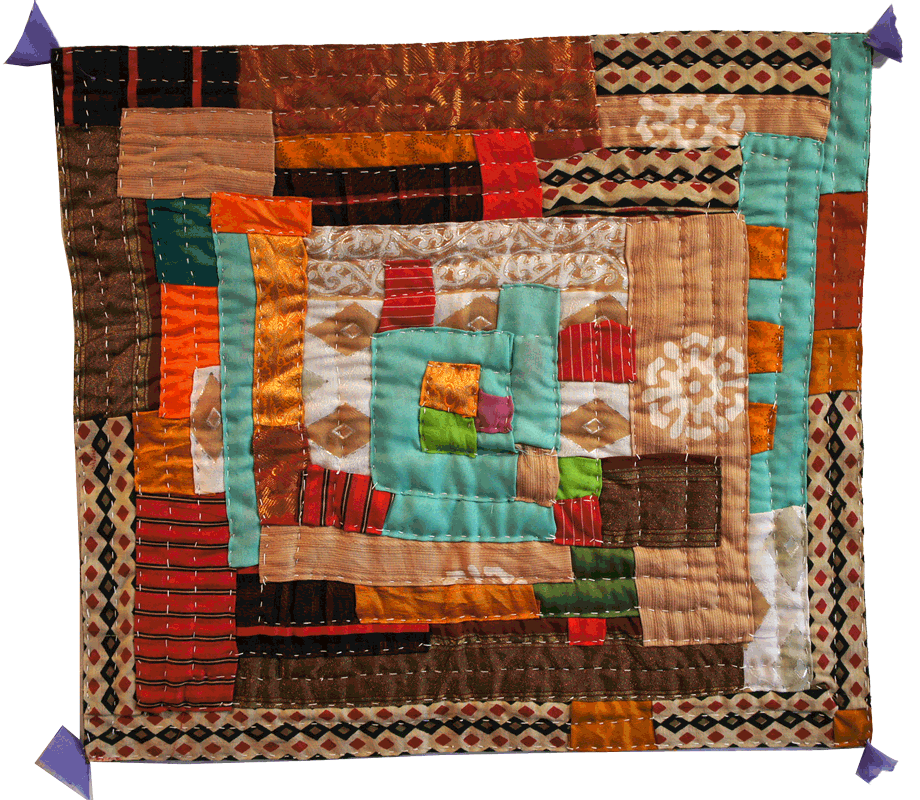|
|||
| Quilts | |||
 |
 |
||
Grandma Telfer was a quilter, but I began quilting long after her death. I was 58 and began with Ocean Waves. It was made of men’s used shirts, and I was fortunate to have the renowned designer/quilter Grace Earl of the Chicago Art Institute as my guide. It was 1988.
By 1995 I had made eleven full size quilts, and had a solo exhibit/concert at New Pieces Gallery in Berkeley.
I learned how to enhance a traditional design and eventually left the formal patterns for less confined quilts such as Kathakali, Superquilt, and Bali.
Every 7th quilt I have made is a ‘Leftovers’ quilt, using the cut pieces remaining from the preceding 6 quilts.
Most of my ‘quilts’ are now in private collections. |
After going with Joe Cunningham to see a quilt exhibit at the Museum of the African Diaspora in San Francisco in the summer of 2011, I felt compelled to try to find the women who had created the quilts (kawandi), for they were so completely different in assembly from any quilts I had ever seen. Careful examination still did not reveal the way in which they had been made.
I learned that these people, the Siddi, were of African descent, and had been brought to India as slaves by the Portuguese 400 years ago. They still live in relative isolation from the Indian community, castes, and tribals. After much searching, and with the help of Henry Drewal, I finally found a settlement in the state of Karnataka and spent 2 weeks with the Siddi, on their porches in the forest, taking notes, making videos, and learning the technique.
I returned to San Francisco and created 20 pieces during the following year. Then I returned to the Siddi in 2012, taking scrap fabrics for their use and four of my pieces for their examination.
This style of quilting is done completely by hand, using scraps and recycled clothes. The fabrics I use are largely from India, where recycle clothes and haunt the tailor shops for ‘waste material’.
The Siddi women were astonished and appreciative at my return last year. Their feedback brought me to another level, and I am now making larger pieces. Two of them are scheduled to be shown at the San Jose Quilt Museum as part of an exhibit on stitching. |
||